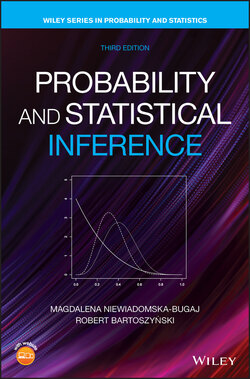Читать книгу Probability and Statistical Inference - Robert Bartoszynski - Страница 38
Example 1.19
ОглавлениеLet and let be the class of all subsets of such that either or is finite. Then is a field but not a ‐field. First, if then because the definition of is symmetric with respect to complementation. Next, if and are both in , so is their union. If and are both finite, then is finite and hence belongs to . On the other hand, if either or (or both) are finite, then is also finite because it is contained in and also in .
Thus, is a field. However, is not a ‐field. Let be the set consisting only of the element (i.e., ). Clearly, . Take now . This is a countable union of sets in that is not in since the set of all even numbers is not finite, nor does it have a finite complement.
Typically, it is easy to determine that a class of sets is a field, while direct verification that it is a ‐field can be difficult. On the other hand, it is sometimes easy to verify that a class of sets is a monotone class.
Theorem 1.4.2 A ‐field is a monotone class. Conversely, a field that is a monotone class is a ‐field.
Proof: To prove this theorem, assume first that is a ‐field, and let be a monotone sequence of elements of . If then , whereas if then So is a monotone class. On the other hand, let be a monotone class and a field, and let be an arbitrary sequence of elements of . Put . Then since is a field, and also for every . Further, since is a monotone class, . However, , so is a ‐field, as asserted.
The last in this series of concepts is that of the minimal field (or ‐field, or monotone class) containing a given set or collection of sets. We begin with some examples.
